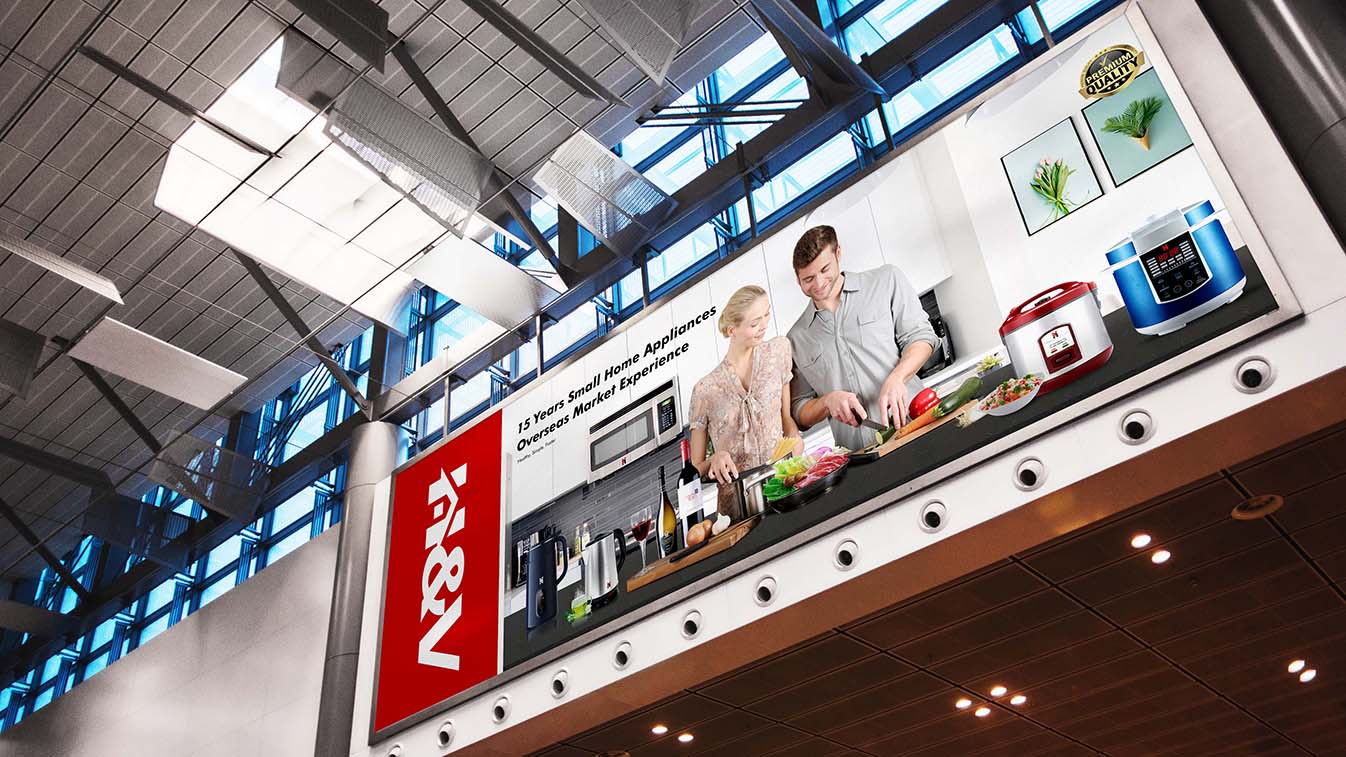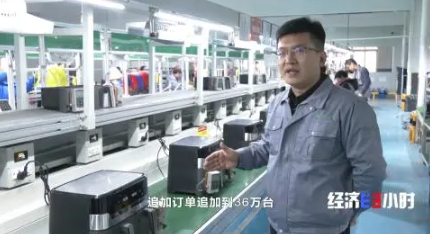In the era of planting grass, all small household appliances are "intelligence quotient tax"?
The accumulation of wealth and the upgrading of residents' consumption have raised consumers' consumption preferences from simply satisfying their living needs to the level of quality of life and "freshness". Young people's consumption of small household appliances is a concentrated expression.
The main consumer group of small household appliances is not the family-style mass market, but the young generation Z population, among which female users in first- and second-tier cities are the main force.
Once you grasp the "pulse" of consumers, you can capture the hearts of consumers. This has been firmly grasped by some manufacturers.
Right now is the era of planting grass. In order to cater to the tastes of young consumers, various small home appliance manufacturers are engaged in IP co-branded models, Internet celebrity anchors bringing goods, and popular idol endorsements. Practice has proved that this is a successful strategy for small household appliances to open up the market.
Because the older generation tends to choose large-capacity, family-oriented, and inexpensive products when purchasing electrical appliances, and the old brands of home appliances such as Midea and Supor have become their first choice. In the eyes of the younger generation of consumers, fashion is one of the factors that make them generate consumption impulses. "Appearance" is as important as performance, and price is not a problem.
Under the joint catalysis of the e-commerce promotion festival and the "home economy", consumers operate as fiercely as tigers on the shopping platform. But after the craze for small home appliances recedes, consumers are left with more thinking: how many are not useful? In the end is not "pay IQ tax"? "You can see it when you see it, but it's useless when you do it." Why don't you go out and buy a ready-made one? It was idle after a few uses, and I began to wonder why I bought it in the first place... Consumers' constant pursuit of quality life is the driving force for the replacement of small household appliances. Rather than saying that small household appliances are "IQ tax", it is better to pay more attention to the consumer demand reflected behind the "IQ tax".
The IQ tax means that the role of small household appliances fails to meet the needs of young people, which does not mean that the needs of young people have disappeared. Being approved as "IQ tax" can only show the shortcomings of the current small household electrical appliances, but also the future development opportunities of manufacturers.
01 Undercurrent differentiation
The dividends of the epidemic have receded, and the track has been differentiated. Specific analysis and judgment are required for each sub-category market.
Nowadays, the market for small household appliances is surging, with obvious differentiation.
Beginning in the second half of 2019, small home appliances began to show value in the capital market. By the beginning of 2020, the overall revenue growth rate of listed small household appliance companies will be higher than that of A shares. But starting from 2021, different categories will begin to differentiate.
For example, in 2021, clean small household appliances will continue the high boom in 2020, and the market size will reach 13.6 billion yuan, a year-on-year increase of 40.2%. The turnover of vacuum cleaners, sweepers and washing machines in 2021 will be 5.64 billion yuan, 8.43 billion yuan, and 5.03 billion yuan respectively, of which the turnover of floor washing machines will increase by 333% year-on-year, and the three-year CAGR will reach 339%.
However, according to the data of Aowei Cloud (AVC), there are 12 categories of small kitchen appliances, and the retail sales in 2021 will be 51.4 billion yuan, down 14.1% year-on-year, of which online retail sales will be 35.64 billion yuan, down 9.7% year-on-year , offline retail sales were 15.72 billion yuan, a year-on-year decrease of 22.7%.
Supor and Xiaoxiong Electric, which mainly focus on small kitchen appliances, performed poorly.
As a small home appliance brand dominated by online channels, the dividends of "home economy" once made the performance of Xiaoxiong Electric explode, and its stock price once hit a high of 165.9 yuan, but since then, Xiaoxiong has ushered in a simultaneous decline in profit growth and stock price . Entering 2021, the net profit of Xiaoxiong Electric has shown negative growth in the first three quarters.
The overall growth of the massage and personal care category is relatively stable, but among them, massage chairs have overdrawn part of the demand due to the epidemic, and the turnover in 2021 will decline; the smart micro-investment market is dominated by two major brands, XGIMI and JMGO, forming a duopoly pattern. The turnover increased by 34% year-on-year, continuing the high boom.
The dividends of the epidemic have receded, and the track has been differentiated. Specific analysis and judgment are required for each sub-category market.
Small kitchen appliances are just-needed categories, and the market is in good condition. Although Midea, Joyoung and Supor are not the first choice among young consumers, among the electric pressure cooker category, CR3 reaches 81%, and their share in related categories is relatively stable.
However, some of the new small kitchen appliances that have become popular in recent years have been overdrawn by some of the demand, and are now relatively cool, such as health pots, multi-function cooking pots and other categories under pressure, the industry has entered the stage of stock competition: there is a head The first company was "Mei Jiu Su", followed by rookies Beiding and Mofei. In addition, the product homogeneity was serious, the differentiation between different brands was narrowed, and the competition pattern became more and more fierce.
In contrast, cleaning products, massage and personal care products, and smart micro-projection appliances are relatively optimistic. Due to the relatively high technological content and a certain degree of differentiation between products, the overall competition pattern of the industry is relatively fragmented, and the market share of major brands remains stable.
In addition, the consumer demand of some categories has not been fully released, such as smart micro-investment and smart toilet electricity, and the penetration rate is still large and the market is broad.
02 Demand ≠ Value
Buying means there is demand, and the machine eating ashes means that there is a problem when the demand is met.
I bought small home appliances with great enthusiasm, and they put dust in the corners after not using them a few times, which became a problem for consumers.
Buying means there is demand, and the machine eating ashes means that there is a problem when the demand is met. The inability to match the actual demand with the product value can be attributed to the following three aspects: the product itself is lacking, the usage scenarios are limited, and the use effect of cheap products is poor.
Advocating the concept of healthy life has penetrated into the consumption concept of young people. Homemade food appliances such as yogurt machines and ice cream machines have become "grass-growing" items. However, in the actual use process, the production process is complicated, the material cost is high, and the success rate is low. The problem has caused many people to "pull the weeds".
Simplicity, good effect, and low cost should be the original intention of small home appliances, but now it runs counter to the complex, poor effect and high cost, which naturally makes people reluctant to pay. In the era of "lazy economy", in a limited time, it is the real demand of consumers to free up their hands to the greatest extent, improve efficiency, and meet their daily needs.
The limitation of usage scenarios is a major reason why small appliances are idle. From the previous successful experience, adding portability and mobility to products can make all breakthroughs - this affects the frequency of use by consumers, the most typical example is the explosive growth of vacuum cleaners after wireless. In addition, there are "new species" such as hair dryers for charging, rechargeable electric lunch boxes, etc., and the acceptance has been greatly improved.
A negative problem in the industry is that the competition in the small home appliance industry is extremely fierce. Due to the low technical threshold, in order to stabilize sales, some small home appliance manufacturers produce OEM/ODM products, and use OEM and OEM methods to play low-price strategies. The price of Nanjiren's 9.9 electric toothbrush and Konka's 38-yuan massager is really attractive compared with hundreds or thousands of products.
First-time buyers buy products driven by low prices, but the actual use effect is not satisfactory, or even counterproductive. Some people are uncomfortable with electric massagers, and some people use electric toothbrushes to brush their gums.
It is difficult for consumers to have trust in these inferior products, and then extend their dissatisfaction to all small household appliances, and the label of "IQ tax" has fallen. Ye Jide, the secretary of Supor's board of directors, once said frankly: "Some competitors have been adopting the strategy of explosive models and low prices, and this has fallen into a very bad state."
The popularity of a product is not accidental, nor does it rely on price wars to win, but it needs to be built on the basis of meeting the real demands of consumers. Whether it is Dyson's hair dryer, vacuum cleaner, or Yunjing's sweeping and dragging machine, the success of these Internet celebrity items is not only because they can meet the needs of consumers, but also because of their practicality and aesthetics. Sex and intelligence.
03 A new way out
The bullets may fly for a while longer, but the gunfire is getting closer.
Whether it is the small kitchen appliance market, which has long been filled with gunpowder smoke, or the cleaning category and personal care category, which is full of war drums, the competition in various sub-tracks will enter a white-hot stage. The bullets might still fly for a while, but the gunshots were getting closer. Manufacturers need to explore new ways.
At present, the competition pattern of traditional large single products in the market has been relatively stable, and it is difficult to accommodate new competitors.
A survey by Cinda Securities Research Institute shows that the long-tail category of small household appliances represented by bread machines and coffee machines occupies a considerable proportion of my country's small household appliance market, and the growth rate of long-tail categories is faster than that of traditional categories.
Category segmentation is the only way for small household appliance companies to get out of the competitive predicament. Not only to widen the radius of the small household appliance market, but also to jump out of the market and seek deep integration with other industries.
Cross-border cooperation is nothing new. If you want to "get out of the circle", you have to change from a single product to a more in-depth service.
Beiding is a successful case. Its health pot began to be equipped with exclusive ingredient packages to help users avoid the complicated selection and matching of ingredients. For another example, air fryers and cooking machines can work with pre-made vegetable manufacturers to create customized recipes, which are closer to lifestyle sales.
In the era of stock competition, homogenization is one of the problems that the entire industry is currently facing. The more companies want to break the homogenization situation and win the favor of users, the more they need to launch differentiated and differentiated single products, and the more they must continue to innovate to meet user needs.
For home appliance brands in the mature stage, they began to differentiate themselves by product upgrades, and more deeply bind themselves to a certain type of product. Joyoung and Supor are similar examples.
According to the report of the Orient Securities Research Institute, Joyoung's "SKY series", by enriching its layout in different price segments, has steadily increased the average price of soymilk machines to the industry-leading level, and has been able to maintain its market share at the forefront of the industry.
A more distinct brand image is equally important in the pursuit of brand culture. As the "facade" of an enterprise, the brand image also shows certain cultural characteristics and penetrates into the product.
Supor and electric pressure cookers are almost on the same level; Xiaoxiong Electric attracts young female users with its "cute" brand image; Xiaomi is the main "smart home ecological model", creating a minimalist, intelligent, and cost-effective brand characteristics , these are successful and worthy of reference.
On the whole, these successful examples have several common features: a distinct product image, a clear product positioning, and a clear customer base. Although the value is expensive or low, it is also "depending on the person".
04 Written at the end
The product has been criticized, and it was once reduced to an "IQ tax", which is not necessarily all bad for home appliance manufacturers. If we can gain insight into the real needs of consumers from the complaints about the "IQ tax", the tuition fees of manufacturers will not be paid in vain.
The current consumption outlook of young people is very worthwhile for manufacturers to taste and study. They are not just buying a commodity, they are also buying a lifestyle. A product is not just a commodity, but a life attitude and solution.
Relying on traditional items is a thing of the past. In a saturated market, relying on the commodity itself to compete hard, most of them can only be out.
Adam Smith once said: "In the production of commodities, the expansion of the market is the fundamental solution to the problem."
The road from commodity production to service provision may be long, but to get out of the four walls of the "IQ tax", most companies have few options. The market in the traditional sense has reached its limits, and the market for lifestyle and solutions is just beginning.






-
Service Hotline:
0086-138 2615 6565 -
Room 508, 2nd building, Tian an Jieneng Technology Park,
Panyu Distric, Guangzhou, Guangdong.
E-mail:heli@hvheli.com


Catalogue

Official Accounts
© COPYRIGHT 2022 H&V ALL RIGHTS RESERVED Powered by 300.cn SEO










